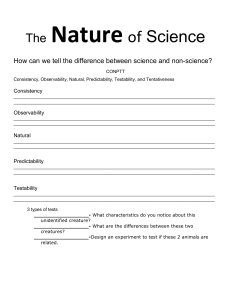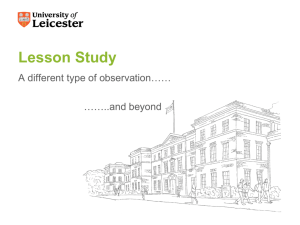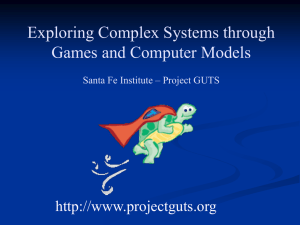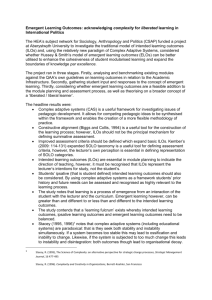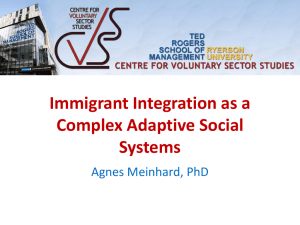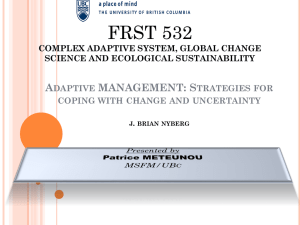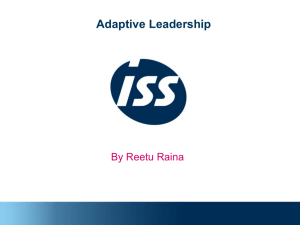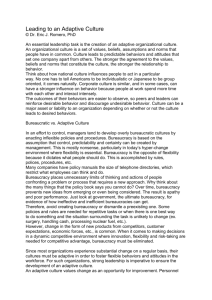SYSE 802
advertisement
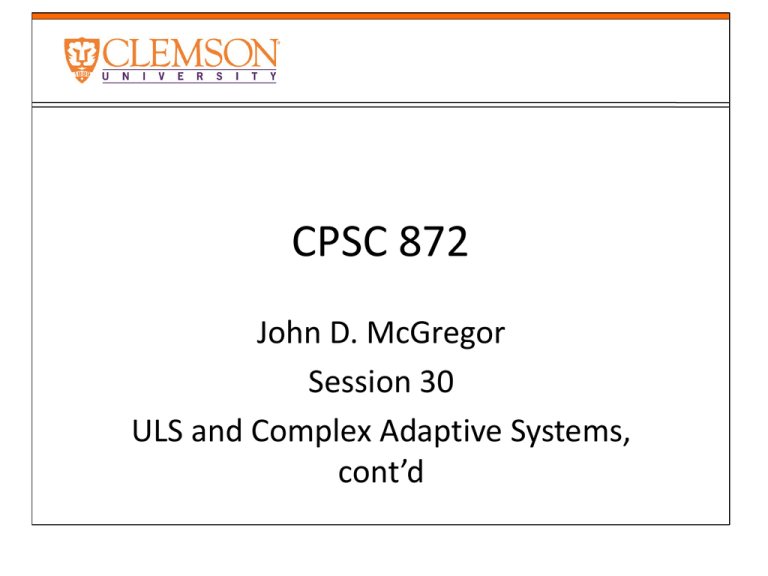
CPSC 872 John D. McGregor Session 30 ULS and Complex Adaptive Systems, cont’d Context specification problem specification solution implementation Software and systems • A system is a set of connected things working together. • A software-intensive system includes software things and hardware things. Types of systems 1. Structures (Bridges) 2. Clock works (Solar system) 3. Controls (Thermostat) 4. Open (Biological cells) 5. Lower organisms (Plants) 6. Animals (Birds) 7. Man (Humans) 8. Social (Families) 9. Transcendental (God) System of systems • A collaboration of independent systems that have lives of their own but are brought together to serve a purpose. • they have five common characteristics: operational independence of the individual systems, managerial independence of the systems, geographical distribution, emergent behavior and evolutionary development Automobile • • • • • • Can be viewed as a system of systems Basic vehicle + Plugin GPS + Tablet connected via bluetooth + Plugin video player + … Complex Adaptive Systems • http://www3.nd.edu/~gmadey/Activities/CASBriefing.pdf • http://sdsi.asu.edu/wpcontent/uploads/2013/01/Dahm-AIAA-2013AIAA-Aerospace-Sciences-Keynote.pdf Complex adaptive systems "a system that emerges over time into a coherent form, and adapts and organizes itself without any singular entity deliberately managing or controlling it" [Holland, 1995] • • • • Emergence Dynamism Edge of chaos Non-linear change Designing Complex Adaptive Systems • Is platooning like “flock behavior”? • Flock behavior involves a few simple rules – Separation - avoid crowding neighbors (short range repulsion) – Alignment - steer towards average heading of neighbors – Cohesion - steer towards average position of neighbors (long range attraction) We are interested in finding the simple rules for platoons of vehicles in order to simplify autonomy for vehicles. Ultra-large scale systems "interdependent webs of software-reliant systems, people, policies, cultures, and economics" [Northrop, 2006] Unprecedented scale in terms of: number of routine processes, interactions, and “emergent behaviors” lines of code number of jurisdictions number of people number of policies Consequences of ultra-large scale systems • Consequences of being ULS – Decentralized – Conflicting, diverse, unknowable requirements – Continuous evolution – Heterogeneous elements – Erosion of the people/system boundary – Failure as the norm – New paradigms for policy and control Implications for design • • • • Uncertainty Non-linear Emergent behavior Cause and effect do not appear to be related • Specify for an envelope of behavior rather than specific values • Accept results that are within the boundary • Raise errors at the boundary Design for testability • Fault -> error -> failure • Reachability • Infection • Propagation • Controllability • Observability Design for testability • Controllability – Need routines that allow setting values in memory • Observability – Assertions – Testability ports (this is what the hardware people do)) Policies • http://www.innovation.cc/scholarlystyle/desouza_lin_policy_informatics_v16i1a7 .pdf Design • Our usual design process assumes a mechanistic, linear world • We seek optimization • With complex adaptive systems non-linear responses make that impossible socio Management interactions technical architects interactions architecture design Architecture/impl session
